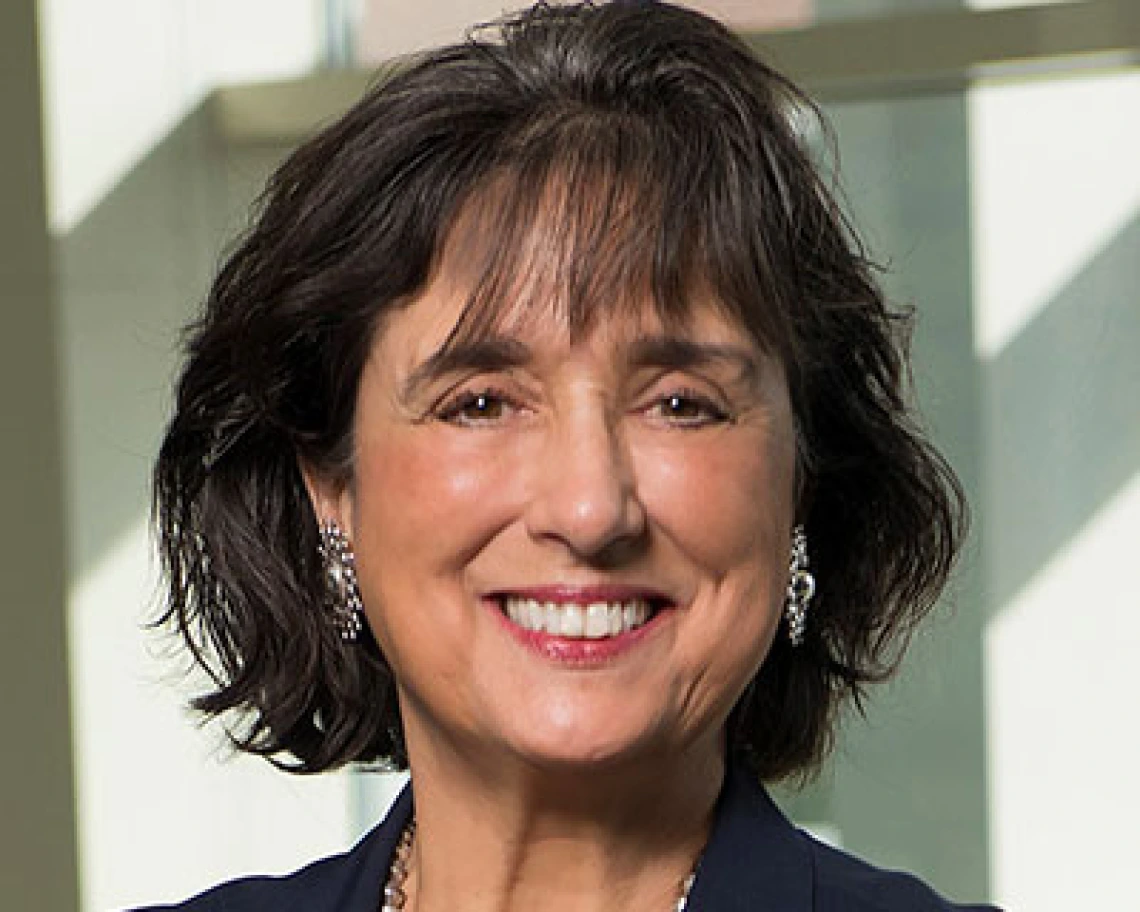Building a Pipeline from the Nation's First Tribal College to Neuroscience Laboratories
University of Arizona Health Sciences and Diné College researchers will receive $1.3 million from the National Institutes of Health to train Navajo students in neuroscience programs.

Native Americans are among the most underrepresented groups in the biomedical sciences, accounting for just 0.5% of the total workforce, lower than any other racial or ethnic group, according to the National Institutes of Health.
Additionally, they face significant disparities in health care compared with other U.S. populations. Though more than a third of the most prevalent health disparities in Native American communities are related to brain health, the diagnosis, treatment and study of these disorders is complex. Meeting these multifaceted challenges requires the development of a biomedical workforce rooted in the traditions and cultures of Native American populations.
In response, Kathleen Rodgers, PhD, associate director of translational neuroscience for the University of Arizona Health Sciences Center for Innovation in Brain Science (CIBS), Roberta Diaz Brinton, PhD, director of the Center, and Fred Boyd, PhD, at Diné College, have been awarded a $1.3 million NIH grant to develop a cooperative training program to create a pipeline of Navajo students to advance from Diné College to neuroscience programs at top-tier research universities, creating a model of culturally grounded STEM education, bolstering cultural diversity within the NIH workforce and helping to address Native American health disparities.
"We have a dire need for more neuroscientists on the Navajo Nation," Diné College President Charles Monty Roessel, EdD, said. "This program will increase the number of Navajo neuroscientists in the coming years. We're very excited."
Supported by a five-year grant, the UA's URBRAIN (Undergraduate Readying for Burgeoning Research for American Indian Neuroscientists) program is a "culturally aware and community-oriented" collaborative partnership with Diné College, established 51 years ago and the nation's first tribal college.
"This is a project that benefits Navajo students at Diné College and will have financial, intellectual and motivational benefits for these students," said Fred Boyd, PhD, a Diné College instructor and collaborator in the training program. "Our students will have the opportunity to engage with tribal elders while being mentored on research methods, technical training and academic progress that increases the number of Native Americans in graduate schools who will pursue research careers."
URBRAIN recognizes Native American students may approach the world – and the means to investigate it – from fundamentally different philosophical perspectives. In contrast to Western modes of thinking, Native American perspectives often are more holistic and narrative-based.
"By integrating the holistic perspective of the Navajo culture with the scientific problem-based approach of neuroscience, we will open new opportunities for Navajo students to pursue research relevant to their communities," Dr. Rodgers said.
In parallel, CIBS has been expanding Diné College's research infrastructure to enable the success of its trainees and the overall Navajo student body at Diné. Developing fundamental laboratory research skills and improving institutional research infrastructure will improve student instruction, career progression and research output of Diné faculty members.
At its core, the URBRAIN program was designed to honor and celebrate indigenous sovereignty. URBRAIN students and mentors will engage with community elders and conduct public engagement events on the Navajo Nation to increase trust between Diné elders and UA researchers, as well as to increase community support for Navajo students to pursue biomedical research careers.
"Partnering with Native Nations in our region is critical for our land-grant mission and it is an important part of the strategic direction for the University of Arizona," said UA President Robert C. Robbins, MD. "In particular, we need to build programmatic and research capacity in ways that address the needs of tribal communities and promote opportunities for Native American students. This collaboration between the UA Center for Innovation in Brain Science and Diné College will enable students to pursue the creation of innovative treatments and cures that will have lasting impact in their communities and around the world."
URBRAIN is supported by the National Institute of Neurological Disorders and Stroke under award No. R25-NS107185.
About the Center
The Center for Innovation in Brain Science (CIBS) at the University of Arizona is addressing the challenge that, in the 21st century, there is not a single cure for a single neurodegenerative disease. The CIBS team is focused on four age-associated diseases, Alzheimer's, Parkinson's, Multiple Sclerosis and ALS. With expertise spanning discovery, translational, regulatory and clinical science, CIBS is shifting the research paradigm as one of the nation's leading research centers, pioneering patient-inspired, data-driven approaches to find cures for Alzheimer's and other neurogenerative diseases. The CIBS mission is to create innovations in brain science of the future for those who need a cure today. Find out more about how CIBS is achieving the vision of vibrant brains that last a lifetime. cibs.uahs.arizona.edu. (Follow us: Twitter)
About the University of Arizona Health Sciences
The University of Arizona Health Sciences is the statewide leader in biomedical research and health professions training. The UA Health Sciences includes the UA Colleges of Medicine (Tucson and Phoenix), Nursing, Pharmacy, and the Mel and Enid Zuckerman College of Public Health, with main campus locations in Tucson and the growing Phoenix Biomedical Campus in downtown Phoenix. From these vantage points, the UA Health Sciences reaches across the state of Arizona and the greater Southwest to provide cutting-edge health education, research, patient care and community outreach services. A major economic engine, the UA Health Sciences employs nearly 5,000 people, has approximately 900 faculty members and garners $200 million in research grants and contracts annually. For more information: uahs.arizona.edu (Follow us: Facebook | Twitter | YouTube | LinkedIn | Instagram)
About Diné College
Diné College is the first tribal college in the country and recently celebrated its 50th year. Located on the Navajo Nation and predominately serving Navajo students, the college is a 4-year institution and offers 8 bachelor's degrees.

